#Continuous Assessment
Text
SSS 1a physics assignment .....the chances of it being correct are very low🤡💔
North north pole
ULS will not be responsible of you are marked wrong
South south pole
Use your sense and change the north to south and the south to north on both magnets
North south line of force between 2 magnets
Pls DM IF YOU UNDERSTAND
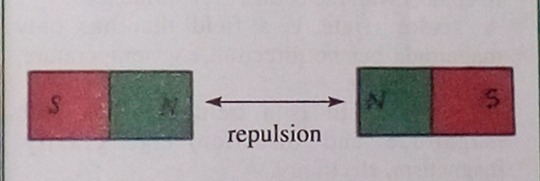
View On WordPress
0 notes
Text
ok i'd seen posts about and references to the tiktok tunnel girl but today i finally saw one of her videos and it is SO much crazier than i imagined???
she has actual mining equipment? people made it sound like she was just digging holes but no this is a legit mine??? what the fuck???? so many questions
+ some of my favourite comments on the video



#this is WILD#construction is currently shut down while the mine is assessed by experts#and they either give her permits to continue or shut it down permanently#i have a lot of respect for her i have to be honest#🧃#tunnel girl#tiktok tunnel girl
742 notes
·
View notes
Text
stuck thinking about when day gets crowded and overwhelmed on his birthday he calls out to gee of all people there to remove him from the situation; and how when day tells her he wants to be alone she makes sure he knows she wants to understand him and he can talk to her (not to help him or to fix things for him; simply to understand him) and when day reaffirms a boundary she accepts this and doesn't press further. he's her friend and she cares for him but he's still an adult and she has no problem treating him as such and i think that at the moment she is the only one from day's past who is actively able to do so
#last twilight#gee best girl#i know disability is difficult on loved ones as well and it is very easy for those closest to you to fall into pitying and babying you#but gee has been working very hard to not let that happen to her friendship with day#she is immediately ready to keep teasing and playing with day whilst also quick to adjust to the new aspects of their relationship#she wants to learn how to guide day through the badminton court to take over from 'his mhok' and is more than willing to take day#to the bathroom in the bar but when day assures her he can handle it she doesn't infantalize him#she immediately invites day to the bar without any hesitation and then continues to invite him to her game because that's#an important aspect of their friendship#and when he shows up she isn't afraid to joke around and tease him#she's extremely good at not treating him like a broken piece of porcelain whilst also quickly taking cues in how to adjust where it is#necessary#im glad day gets someone from his past who doesnt need as much time as his family to readjust to his new normal#and it is also an incredibly good parallel to how bad augustus' assessment of the situation is#last twilight the series
77 notes
·
View notes
Text
Hello fandom. I understand that very few of you will care about my personal opinion, and that's fine, but I find it important enough to how I run my blog to share anyway.
In the future, all of my posts will simply be avoiding any mention of Wilbur wherever possible. His character is a major part of Tallulah's story, but I will be keeping him away from my blog as much as I can.
Typically, I would go with a "death of the author" approach and keep mentions of the character and cc more separate. However, the cc's alleged quest for money and fame changes that entirely. I will not be contributing to that. That's just my personal choice, so there should be no shame to anyone who chooses to separate the two, obviously.
I watched Shubble's video and I saw his response. In my opinion, it was terrible. The way he centralized his own "growth," minimized the pain he caused, and left the actual apology on the second page is revealing. His statement reminds me of some of the past emotional abuse I've experienced, so his content will no longer be welcome on my blog. I believe in the merit of archiving, so I will not be deleting any past posts, but he will no longer have any place in my death family related tags.
#I am not usually an unprovoked statement kind of person#especially because I don't think that's why people look at my content and I 100% understand a desire for escapism#However his name would absolutely pop up naturally on this blog since I main Philza.#I have little interest in letting that happen though.#I have mentioned in the past how victims should never feel forced into silence and this is a part of that.#I listen to the victim. I wait for more information. I form an opinion when I can assess both parties b/c victims deserve to be heard .#I have listened and will continue listening but Wilbur and his own words are enough to paint my own picture.#Unless something major changes this is how me and my blog will be handling it. Thank you.#qsmp#qsmp wilbur#wilbur situation#tw abuse
37 notes
·
View notes
Text
If I could make a minecraft mod I'd make one called "hold on!" Where when you open the inventory on single player you pause the game, like when you press escape.
I think this would help slower players (me) reorganise their inventory while in high stress situations, allowing for a slower approach to gameplay and a chance to cool down and strategise
#minecraft#mineblr#if someone did make this that would be. very useful#i dont know how ;w;#but tbh i think it could also be considered an assessibility feature#like yeah the options screen exists but that pulls you out of the game#you cant DO anything except bear your teeth and wait until u feel ready to continue#like just now i was in a fight with mobs and thought 'i should get my bow' but i knew that#with my bad reflexes and gameplay I wouldnt be able to REACH my bow slot in my keyboard on mouse in time#i survived but i did feel a bit limited
27 notes
·
View notes
Text
been learning to play ironsworn (gritty fantasy ttrpg which you can play with a gm but is mostly suited for solo or small group co-op gmless play) after having the rulebook pdf for several years (stars finally aligned to remove invisible thing blocking me from reading it idk) because i'm on another solo ttrpg kick & i don't know what took me so long to get around to this game because it genuinely is exactly what i was looking for. years ago when i was playing through solo 5e modules i should have just been playing ironsworn (believe it or not, 5e isn't very suited to solo play and is extremely clunky when you try lol).
also though i have dabbled in some other solo ttrpgs, a considerable amount of them are journaling games which is fun but imo considerably more work (usually by the time i'm a quarter of the way through the journal entry, i know how to entire scene played out and i want to move on to the next gameplay thing, so i get frustrated and bored quickly. it feels like when you solve a level in a video game but don't have the coordination to pull off the necessary move so you have to spend 20 extra minutes doing something you already figured out), so i really appreciate like not needing to write something for the game to progress (ive been taking notes for my own record since im playing solo and thus am not really out loud roleplaying the way you do in a group, but i definitely could do that instead and not take notes and the game would still function perfectly)
& ive been playing by myself but also in the past ive played a lot of ttrpgs in very small groups which has been other games but is mostly dnd and like. we also should have been playing ironsworn so that having a gm was not necessary. have definitely played games where we had to adapt the rules soooo much to do something that is just base game included in ironsworn. plus it's rules-light enough to do pretty complex moves that pose difficulties in bulkier games (ever introduced someone to dnd and they tell you they want to do a sick backflip and catch something and then attack and you have to tell them that will require several different consecutive rolls and some creative liberties with how the rules are 'supposed' to let you move? you can just Do That in ironsworn. use the strike move and describe it. done!)
the one thing is that although it's rules-light enough to theoretically play any setting or genre (some with more difficulty than others), ive found so far that like... the grittiness and sense of threat is very built into the mechanics so that would be sort of difficult to work around or change (but i think it's great from a game design perspective). what i mean is like, okay: you start with 5 max hp. there isn't really a way to raise this max hp, you just slowly gain abilities (assets) that make you less likely to have to lose the hp in the first place, or that make it easier to recover. when you encounter foes, you rank them on a scale of 1 -5, and enemies on the lowest side of this scale do one harm to you, while enemies on the highest side do five harm to you. so even though encountering an epic enemy won't always be deadly due to the assets you have, they are ALWAYS capable of taking you down to 0 hp with one good hit. so the feeling of threat is much more present compared to games where your character starts to be able to just tank and push through a failure or huge threat.
admittedly also i'm playing solo, im still learning how to balance combat, and also i built a character who has NO combat talents and iron (the close quarters fighting stat) is one of my lowest stats so i personally am under much more threat than if you built a character who knew how to fight or who could do deadly harm. but also the other thing about combat is it's extremely difficult to maintain control of the fight; you have to score a strong hit to do it on basically all moves, and there's a really limited pool of moves available when you don't have the initiative, and obviously none of them really favour you. i don't know that this makes combat genuinely more difficult, but it does make you feel like the fight is always about to spiral out of your control. every second you let it drag without decisive action feels like it brings you closer to dying. like i said, this is a feature of the game design and not a problem in any way. just thinking about it because when i was initially learning i was going to try to supplant it into a homebrew fantasy world of my own but the tone just wouldn't be right. and that it is somewhat difficult to replicate the kind of worlds that i typically play or run for dnd, which tend to lean somewhat sillier and definitely much higher fantasy
but i like to try new things and tbh especially in dnd i find that i very rarely feel that sense of threat and when i do feel it, it has nothing at all to do with the actual mechanics and reality of the combat and everything to do with how well the dm sells it to me and makes it sound and feel scary and dangerous. which is a testament to what a good gm can do for you but i do appreciate the threat feeling more built-in and also being actually real.
#good idea generator#kas plays ironsworn#am giving it a tag because i will continue to talk about this. its my blog#idk i just find in dnd like. players often FEEL threatened WAY before they actually are threatened#which makes it really hard to balance combat because players treat evenly matched fights like hopeless death traps#so instead they do underleveled combat that feels boring for some hard to pin down reason#but like. the reason is even though you're nervous about the dm's description and the things the monsters can do#there is no real threat. especially in bigger parties where the players DOMINATE action economy. they are always in control#so of course it gets boring. it drags out so everyone can take their turn but it never forces you to make difficult choices#or to totally exhaust all your abilities. after awhile the combats start to feel same-y#because even if the monster is different. you never have to do anything different to defeat it#ofc this is a subjective assessment and also if youre reading this and we play dnd together this is not a gripe abt our table i love u#i think it's really easy to get trapped doing this esp in tables which like rp more than combat#because its also like. once you're used to a certain balance of combat if your dm suddenly threw you a big one#you assume that this is a uniquely large threat in the narrative as well (rather than a rebalancing attempt)#and treat it accordingly. which is to say with way too much caution because it isnt actually that big of a threat#so then as a dm when you have to maintain the feeling of threat and the mechanical threat#(especially when sometimes the mechanical line between 'cakewalk' and 'tpk' is razor thin#and is more about the initiative order and luck than anything else)#you start to prioritize the feeling of threat. which is imo the right call always#but its just after awhile when you feel the threat but nothing ever happens to anybody. the dissonance starts to affect the table#also balancing dnd combat as a dm is really hard and often requires a LOT of on the fly adaptation#because sometimes the CR is useless and you don't know how it's gonna do until the dice are on the table already#anyway. my point is that im enjoying how ironsworn handles this problem
11 notes
·
View notes
Text

“He never trusted me.
I never trusted him.
Neither of us lived up to the idea of ‘Batman and Robin.’
The ‘Dynamic Duo.’
Because Batman and Robin…
…Requires trust.”
—Jason Todd
Batman: Urban Legends #4
#Jason Todd#Red Hood#Batman#Bruce Wayne#comic pages#narratives around Jason Todd frequently treat his actions while he was a kid…#with the same weight as Bruce’s when Jason was a kid…#ignoring that Bruce is a fucking adult#and also literally Jason’s parent.#like…it makes perfect sense that Jason would view not trusting Bruce as his own personal failing.#but frequently the narrative seems to AGREE with his assessment.#and treat it like…idk… ‘taking responsibility’ or some shit.#instead of an obvious coping mechanism for all of his various traumas.#jason needs an ‘IT’S NOT YOUR FAULT’ moment…#in the regular continuity.#is what I’m saying.#I’M BEGGING A WRITER TO DECONSTRUCT HIS COPING MECHANISMS GDI!!!!
263 notes
·
View notes
Text
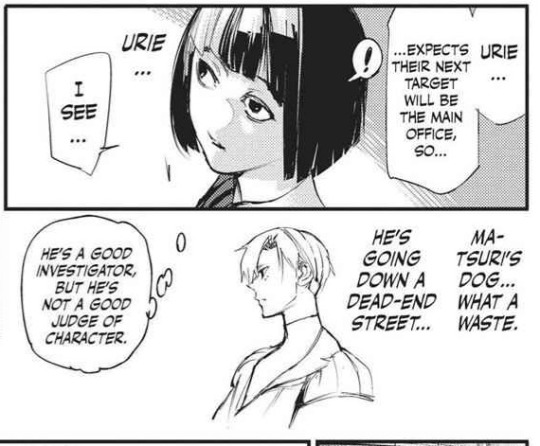
Ui: Oh Urie can't judge a person, shame
Also Ui:
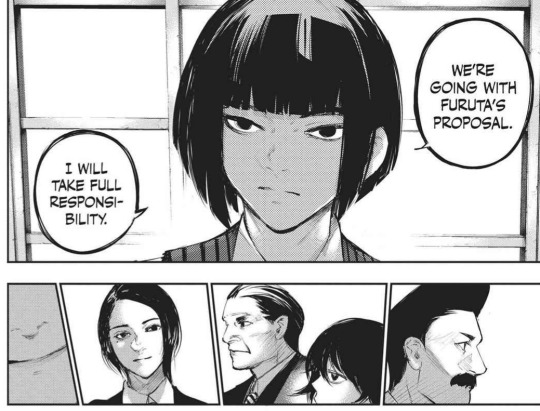
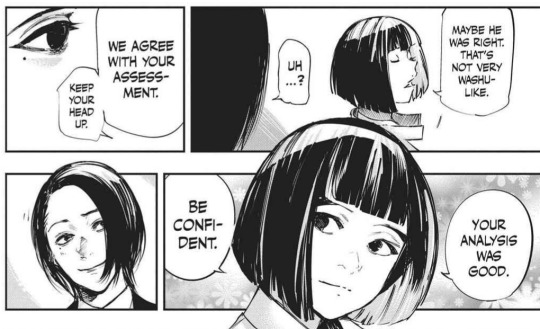
*Trusts the most untrustworthy guy in the story*
#very good judge of character you got there#how's it going for you#to be fair furuta's assessment was correct after all considering HE FUCKING PLANNED THAT#but yeah ui has reason to trust furuta cant really blame him here#i wonder what would happen if houji was still in ccg#i think he would also be fooled by furuta and continue being a weapon for V#and got killed by the taxidermied owl or sth#anyways we can see an example of ishida sui's twisted humor here
21 notes
·
View notes
Photo
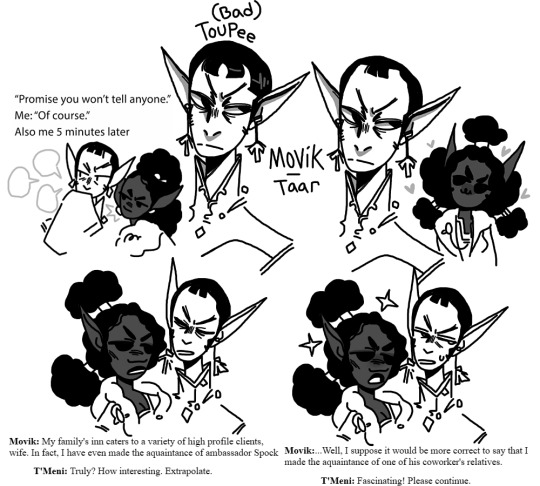
Movik-Taar: Future proprietor of a very popular natural hot spring spa & inn on Vulcan. Husband of T’Meni-bu, Sek’s daughter. He’s self-conscious about his hair loss.
Movik is a braggart, a bit of a lia- exaggerator and a gigantic coward and T’Meni-bu knows that yet earnestly thinks he’s the best thing since sliced bread. I’d say she’s that ‘If I had a lame boyfriend-’ post but she genuinely doesn’t think he’s lame and would be defensive if you said he was. Sek thinks Movik is odious but tries to take solace in the fact that T’Meni finds him extremely pleasant.
T’Meni and Movik were married before either of their pon farrs because T’Meni wanted to and both families saw no reason to delay if that was her wish. Movik wore a toupee to the wedding and was hesitant to take it off in front of her but when he did she just seemed weirdly charmed.
Movik has a Vulcan parental unit (mother, father) who sired him and another father who is Bolian. He has a Bolian younger sister who’s around elementary school aged.
He has a tendency to exaggerate his accomplishments but often quickly backpedals into the truth. He isn’t a malicious person and is actually a bit of a push over. Said he was going into Starfleet most of his life but when he was the age to apply he suddenly said he was going to take over his family’s inn instead.
T’Meni is very bad at doing actual work in the inn but very good at guest relations and trends which makes the inn even more popular. Movik showers her with attention and gifts so she’s perfectly content. Movik thinks she’s an extremely capable, intelligent person (an excellent match!!) and the two are absolutely insufferable together the way close couples are <3
#T'Meni-bu is Sek's daughter and the 'bu' is a childish form of like 'junior'#It's like 'little T'Meni'#The conversation that was in my head when I came up with Movik-Taar was thus:#(all the furniture in a guest's room is gone for some reason)#Movik: Ah. I will ask my wife her opinion on the matter - she is quite sharp. (he goes to get her)#(T'Meni looks around the room very seriously) T'Meni:...Movik. This room has no furniture.#Movik: (nodding earnestly) That was my assessment as well. What do you think could have caused it?#T'Meni: (thinks) ....Perhaps someone has taken it.#Movik: (nodding - so proud) My thoughts exactly. But why?#T'Meni:...Perhaps someone had taken all the furniture in THEIR room.#Movik: (faintly alarmed) This cannot continue. If the trend continues along that vein there may be only one furnished room in the inn.#Guest: C a nyou two like...c all someone??? To help??#T'Meni & Movik are both above all spoiled and very slightly stupid HEHEH don't have much common sense between them but they're harmless#literally every time they come across a ferengi they get scammed HEHHE#beas ocs#[REDACTED] family shenanigans#<- though this is a BIT of a time skip since T'Meni is a child in the 'canon' I draw most often#T'Meni: ANYONE can meet Ambassador Spock but to have met a relative of his coworker?? My husband is so perceptive....<3#bea art tag#star trek#star trek ocs#Vulcan oc#star trek art
21 notes
·
View notes
Text
voted in my local elections today but instead of an "i voted" sticker I got wet socks and a new dent in my car
#lady you were stopped WHY did you go forward as I was continuing to pass you#neither of us were hurt though so like after we both asked if each other was okay and assessed the new dings it was just 'EH'#the weather today is crappy
3 notes
·
View notes
Text
BROTHER WE HAVE TWO DAYS LEFT IN THE ENTIRE SCHOOL YEAR AND A MOM IS THREATENING TO REPORT ME TO THE DEPARTMENT OF EDUCATION BECAUSE HER DAUGHTER HAS AN F
#chow.txt#for 504 violations no less#MA’AM ???#i can recite your childs entire 504 plan because i spent hours studying each one.#your daughter receieves breaks as needed. extended time on assessments. checklists and rubrics. assignments chunked.#all of which i have documentation and proof.#i had a studnet come off his iep and another bypass every single writing goal.#i have not had the help of my assigned intervention specialists all year long.#and frankly. i am doing just fucking fine.#come talk to me face to face about the continual F your daughter has had.#talk to me about the assignments ive excused her from. the checklists and pckets and rubrics and every second#ive dedicated to getting her to remember her work.#if youre so fucking involved and so fucking active in her education#why’d you wait until the end of the goddamned year. to bring this up.
2 notes
·
View notes
Text
The awesome thing about college is that being there is miserable, and not being there is worse.
Nifty!
#I might be going back to college in September and man. I might just quit lmao#I did engineering courses before and that was genuinely the worst over ever felt in my life#I would genuinely have panic attacks and leave every day#But I couldn't just leave the course because I'd feel like a failure#Which didn't matter anyway cause I failed the course lmao#My new course is business shit and I feel like I'm gonna get stuck in a course I hate again#Technically I was good at business. But that was only because it was continues assessment and my teacher wasn't that good.#Fuck dude#Vent#Yeah this is a vent post if you hadn't figured that out#I just had an interview there and apparently my course has an online class once a week#I might quit for that alone cause I can't fucking stand those#But also I don't wanna work at dunnes for 20 years and then die#But also also I can't work part time and go to college so that means no money#Yeah fuck this lmao#Delete later#Fuck it I've got a drawing tablet now. I'm becoming a full time inflation artist or something. I hear that's good money#Thinking about it more I already struggle with self worth or whatever#And I fucking hate annoying businesses bros so becoming one might make me actively hate myself
2 notes
·
View notes
Text
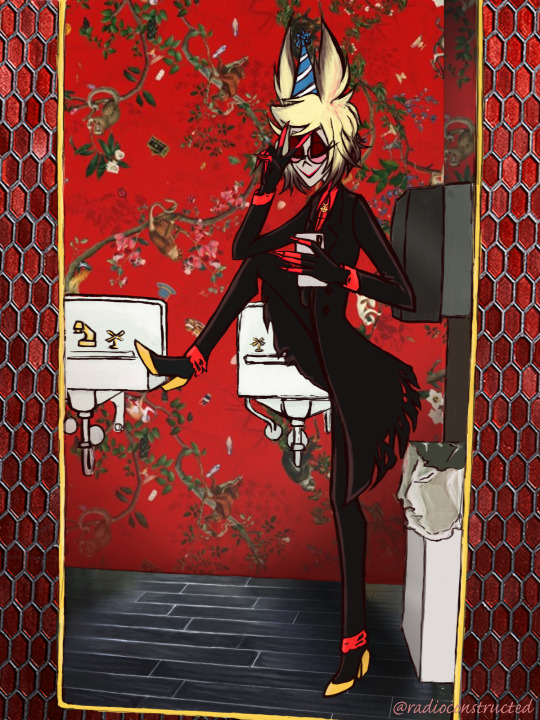
⌖ I HOPE THE BABY THINKS I'M COOL :3
#⌖ hellfie#fem alastor#// WHIPS OUT THA OLD ZOOPHOBIA OUTFIT!!#(She got tired of people telling her that she looked like Katie Killjoy. Also black clothes + blonde hair is a look.)#(And yes her roots are coming in.)#She has a BIRTHDAY HAT because the baby has BEEN BIRTH!#(also... she knows the baby is just... baby and confused and will continue to be confused about existence#and is not assessing her coolness. she's not actually vying for a baby's validation. this is a joke. a funnee caption.)#⌖ online#transfem alastor
38 notes
·
View notes
Note
i still think the solution to all problems is daniel back at redbull😶 but it seems to me that wont be resolved until the end of the season
I’m actually thinking a mid-season swap next year.
Lawson gets a seat, everybody gets a seat, everybody is happy
#remember last week there was a quote from ch*co saying rb and him will assess what to do for the future after the first races in 2024?#what if it means whether he’ll continue for 2024???#anon ask
7 notes
·
View notes
Text
Two MIT teams selected for NSF sustainable materials grants
New Post has been published on https://thedigitalinsider.com/two-mit-teams-selected-for-nsf-sustainable-materials-grants/
Two MIT teams selected for NSF sustainable materials grants


Two teams led by MIT researchers were selected in December 2023 by the U.S. National Science Foundation (NSF) Convergence Accelerator, a part of the TIP Directorate, to receive awards of $5 million each over three years, to pursue research aimed at helping to bring cutting-edge new sustainable materials and processes from the lab into practical, full-scale industrial production. The selection was made after 16 teams from around the country were chosen last year for one-year grants to develop detailed plans for further research aimed at solving problems of sustainability and scalability for advanced electronic products.
Of the two MIT-led teams chosen for this current round of funding, one team, Topological Electric, is led by Mingda Li, an associate professor in the Department of Nuclear Science and Engineering. This team will be finding pathways to scale up sustainable topological materials, which have the potential to revolutionize next-generation microelectronics by showing superior electronic performance, such as dissipationless states or high-frequency response. The other team, led by Anuradha Agarwal, a principal research scientist at MIT’s Materials Research Laboratory, will be focusing on developing new materials, devices, and manufacturing processes for microchips that minimize energy consumption using electronic-photonic integration, and that detect and avoid the toxic or scarce materials used in today’s production methods.
Scaling the use of topological materials
Li explains that some materials based on quantum effects have achieved successful transitions from lab curiosities to successful mass production, such as blue-light LEDs, and giant magnetorestance (GMR) devices used for magnetic data storage. But he says there are a variety of equally promising materials that have shown promise but have yet to make it into real-world applications.
“What we really wanted to achieve is to bring newer-generation quantum materials into technology and mass production, for the benefit of broader society,” he says. In particular, he says, “topological materials are really promising to do many different things.”
Topological materials are ones whose electronic properties are fundamentally protected against disturbance. For example, Li points to the fact that just in the last two years, it has been shown that some topological materials are even better electrical conductors than copper, which are typically used for the wires interconnecting electronic components. But unlike the blue-light LEDs or the GMR devices, which have been widely produced and deployed, when it comes to topological materials, “there’s no company, no startup, there’s really no business out there,” adds Tomas Palacios, the Clarence J. Lebel Professor in Electrical Engineering at MIT and co-principal investigator on Li’s team. Part of the reason is that many versions of such materials are studied “with a focus on fundamental exotic physical properties with little or no consideration on the sustainability aspects,” says Liang Fu, an MIT professor of physics and also a co-PI. Their team will be looking for alternative formulations that are more amenable to mass production.
One possible application of these topological materials is for detecting terahertz radiation, explains Keith Nelson, an MIT professor of chemistry and co-PI. This extremely high-frequency electronics can carry far more information than conventional radio or microwaves, but at present there are no mature electronic devices available that are scalable at this frequency range. “There’s a whole range of possibilities for topological materials” that could work at these frequencies, he says. In addition, he says, “we hope to demonstrate an entire prototype system like this in a single, very compact solid-state platform.”
Li says that among the many possible applications of topological devices for microelectronics devices of various kinds, “we don’t know which, exactly, will end up as a product, or will reach real industrial scaleup. That’s why this opportunity from NSF is like a bridge, which is precious, to allow us to dig deeper to unleash the true potential.”
In addition to Li, Palacios, Fu, and Nelson, the Topological Electric team includes Qiong Ma, assistant professor of physics in Boston College; Farnaz Niroui, assistant professor of electrical engineering and computer science at MIT; Susanne Stemmer, professor of materials at the University of California at Santa Barbara; Judy Cha, professor of materials science and engineering at Cornell University; industrial partners including IBM, Analog Devices, and Raytheon; and professional consultants. “We are taking this opportunity seriously,” Li says. “We really want to see if the topological materials are as good as we show in the lab when being scaled up, and how far we can push to broadly industrialize them.”
Toward sustainable microchip production and use
The microchips behind everything from smartphones to medical imaging are associated with a significant percentage of greenhouse gas emissions today, and every year the world produces more than 50 million metric tons of electronic waste, the equivalent of about 5,000 Eiffel Towers. Further, the data centers necessary for complex computations and huge amount of data transfer — think AI and on-demand video — are growing and will require 10 percent of the world’s electricity by 2030.
“The current microchip manufacturing supply chain, which includes production, distribution, and use, is neither scalable nor sustainable, and cannot continue. We must innovate our way out of this crisis,” says Agarwal.
The name of Agarwal’s team, FUTUR-IC, is a reference to the future of the integrated circuits, or chips, through a global alliance for sustainable microchip manufacturing. Says Agarwal, “We bring together stakeholders from industry, academia, and government to co-optimize across three dimensions: technology, ecology, and workforce. These were identified as key interrelated areas by some 140 stakeholders. With FUTUR-IC we aim to cut waste and CO2-equivalent emissions associated with electronics by 50 percent every 10 years.”
The market for microelectronics in the next decade is predicted to be on the order of a trillion dollars, but most of the manufacturing for the industry occurs only in limited geographical pockets around the world. FUTUR-IC aims to diversify and strengthen the supply chain for manufacturing and packaging of electronics. The alliance has 26 collaborators and is growing. Current external collaborators include the International Electronics Manufacturing Initiative (iNEMI), Tyndall National Institute, SEMI, Hewlett Packard Enterprise, Intel, and the Rochester Institute of Technology.
Agarwal leads FUTUR-IC in close collaboration with others, including, from MIT, Lionel Kimerling, the Thomas Lord Professor of Materials Science and Engineering; Elsa Olivetti, the Jerry McAfee Professor in Engineering; Randolph Kirchain, principal research scientist in the Materials Research Laboratory; and Greg Norris, director of MIT’s Sustainability and Health Initiative for NetPositive Enterprise (SHINE). All are affiliated with the Materials Research Laboratory. They are joined by Samuel Serna, an MIT visiting professor and assistant professor of physics at Bridgewater State University. Other key personnel include Sajan Saini, education director for the Initiative for Knowledge and Innovation in Manufacturing in MIT’s Department of Materials Science and Engineering; Peter O’Brien, a professor from Tyndall National Institute; and Shekhar Chandrashekhar, CEO of iNEMI.
“We expect the integration of electronics and photonics to revolutionize microchip manufacturing, enhancing efficiency, reducing energy consumption, and paving the way for unprecedented advancements in computing speed and data-processing capabilities,” says Serna, who is the co-lead on the project’s technology “vector.”
Common metrics for these efforts are needed, says Norris, co-lead for the ecology vector, adding, “The microchip industry must have transparent and open Life Cycle Assessment (LCA) models and data, which are being developed by FUTUR-IC.” This is especially important given that microelectronics production transcends industries. “Given the scale and scope of microelectronics, it is critical for the industry to lead in the transition to sustainable manufacture and use,” says Kirchain, another co-lead and the co-director of the Concrete Sustainability Hub at MIT. To bring about this cross-fertilization, co-lead Olivetti, also co-director of the MIT Climate and Sustainability Consortium (MCSC), will collaborate with FUTUR-IC to enhance the benefits from microchip recycling, leveraging the learning across industries.
Saini, the co-lead for the workforce vector, stresses the need for agility. “With a workforce that adapts to a practice of continuous upskilling, we can help increase the robustness of the chip-manufacturing supply chain, and validate a new design for a sustainability curriculum,” he says.
“We have become accustomed to the benefits forged by the exponential growth of microelectronic technology performance and market size,” says Kimerling, who is also director of MIT’s Materials Research Laboratory and co-director of the MIT Microphotonics Center. “The ecological impact of this growth in terms of materials use, energy consumption and end-of-life disposal has begun to push back against this progress. We believe that concurrently engineered solutions for these three dimensions will build a common learning curve to power the next 40 years of progress in the semiconductor industry.”
The MIT teams are two of six that received awards addressing sustainable materials for global challenges through phase two of the NSF Convergence Accelerator program. Launched in 2019, the program targets solutions to especially compelling challenges at an accelerated pace by incorporating a multidisciplinary research approach.
#000#2023#ai#analog#applications#approach#assessment#Blue#bridge#Business#CEO#chemistry#chips#Cleaner industry#climate#climate change#CO2#collaborate#Collaboration#college#computer#Computer Science#computing#concrete#Concrete Sustainability Hub#conductors#continuous#cutting#data#Data Centers
2 notes
·
View notes
Text
This has probably been said before, but the final scene of Glass Onion was really interesting in terms of how much of a pointed commentary about liberalism it is.
First no one helps Helen - they just look away and close their eyes. But then Helen gets going, and people start rallying and joining in on the destruction - until Miles Bron starts getting irate, and they realize she's actually going for it in the face of potential repercussions from the one who holds power currently. Then they try to stop the violence, but she refuses to stop in the face of their shouting.
It's only after she's burned the place down and told Bron exactly how she'll sink him that they start rallying again, after a solution has been found and presented. But Helen didn't need them, she already had what she needed to sink Bron. Sure, it was better than them, like, killing her on Bron's behalf - but they didn't help. They performatively danced around and then tried to maintain the status quo, only ingratiating themselves to the winning side after all was said and done. If you can't see the allegory about liberals, I don't know what to tell you.
#Glass Onion#Liberal#Politics#If you feel hurt by this I'd recommend looking at the liberal parties#And asking what they've actually done that doesn't appease conservatives and maintain the status quo#Things are starting to change!#But they're only going to continue to change if we actually assess democrat running politicians and elect those who actually#Enact progressive policies and don't suck conservative cock#(There are further questions to be had about upholding the US' institutions as they currently stand-#But those require much more nuance than tumblr tag commentary can manage)#I don't hate liberals#I'm just exhausted by them
28 notes
·
View notes